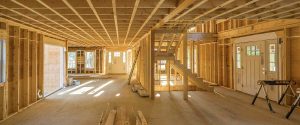What is the Best Timber for House Framing?
When it comes to building a strong and durable home, one of the most critical decisions you’ll need to make is choosing the right timber for your house framing. The choice of timber can significantly impact the structural integrity, longevity, and overall quality of your home. In this comprehensive guide, we will explore the various timber options available for house framing, their properties, and the factors to consider when making your decision.
Understanding Timber for House Framing
Timber has been a popular choice for house framing for centuries due to its versatility, strength, and sustainability. However, not all timber is created equal, and selecting the right type is crucial for a successful construction project. Here are some of the most commonly used timber species for house framing:

1. Douglas Fir
Douglas Fir is a popular choice for house framing, and for a good reason. It is known for its exceptional strength-to-weight ratio, which makes it ideal for supporting the weight of a structure. This timber is readily available in many regions and is relatively affordable. Its natural resistance to decay and insects makes it a durable choice for framing.
2. Southern Yellow Pine
Southern Yellow Pine is another widely used timber species for house framing, particularly in the United States. It offers excellent strength and stability, making it suitable for load-bearing applications. It is also easy to work with and readily available.
3. Spruce-Pine-Fir (SPF)
SPF is a collective term for a combination of spruce, pine, and fir timbers. It is known for its consistent quality and strength. SPF is often used for wall framing and roof trusses. It’s cost-effective and readily available in many regions.
4. Hem-Fir
Hem-Fir is a combination of hemlock and fir timber. It is commonly used in regions where it is readily available. While not as strong as some other species, it is still a suitable choice for house framing. Proper treatment can enhance its durability.
Factors to Consider When Choosing Timber
Now that we’ve discussed some of the common timber species for house framing, it’s essential to consider various factors before making your decision:
1. Local Availability
The availability of timber species varies from region to region. It’s essential to choose a timber that is readily accessible in your area to reduce transportation costs and environmental impact.
2. Strength and Load-Bearing Capacity
Consider the structural requirements of your project. Different timber species have varying strength characteristics. Consult with an engineer or architect to ensure your chosen timber can support the load.
3. Durability
Timber’s resistance to decay, insects, and other environmental factors is vital for the longevity of your home. Some species naturally resist decay, while others may require treatment.
4. Cost
Budget constraints are a significant consideration. While some timber species are more expensive than others, it’s crucial to balance cost with the desired structural qualities.
5. Environmental Impact
Sustainability is increasingly important in construction. Choose timber that comes from responsibly managed forests or consider alternative materials like engineered wood products.

6. Workability and Ease of Installation
The ease with which timber can be cut, shaped, and installed is crucial, especially for DIY projects or when hiring labor. Some species may be easier to work with than others.
Conclusion
Selecting the best timber for house framing is a decision that should not be taken lightly. Douglas Fir, Southern Yellow Pine, Spruce-Pine-Fir, and Hem-Fir are all viable options, each with its strengths and weaknesses. Consider factors such as local availability, strength, durability, cost, environmental impact, and workability before making your choice. Consulting with construction professionals and engineers can provide valuable insights and ensure that your home’s framing meets safety and structural requirements. By making an informed decision, you can ensure the long-term stability and quality of your home construction project. https://nazbuild.com.au/

